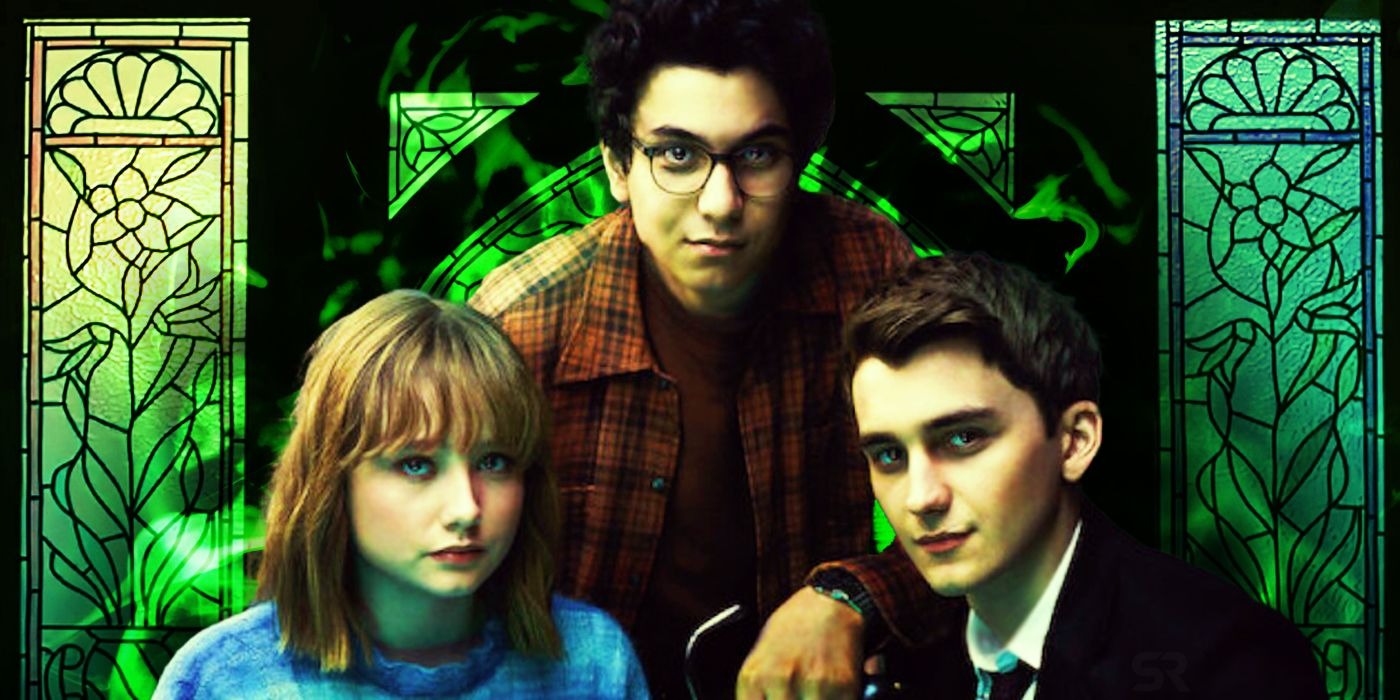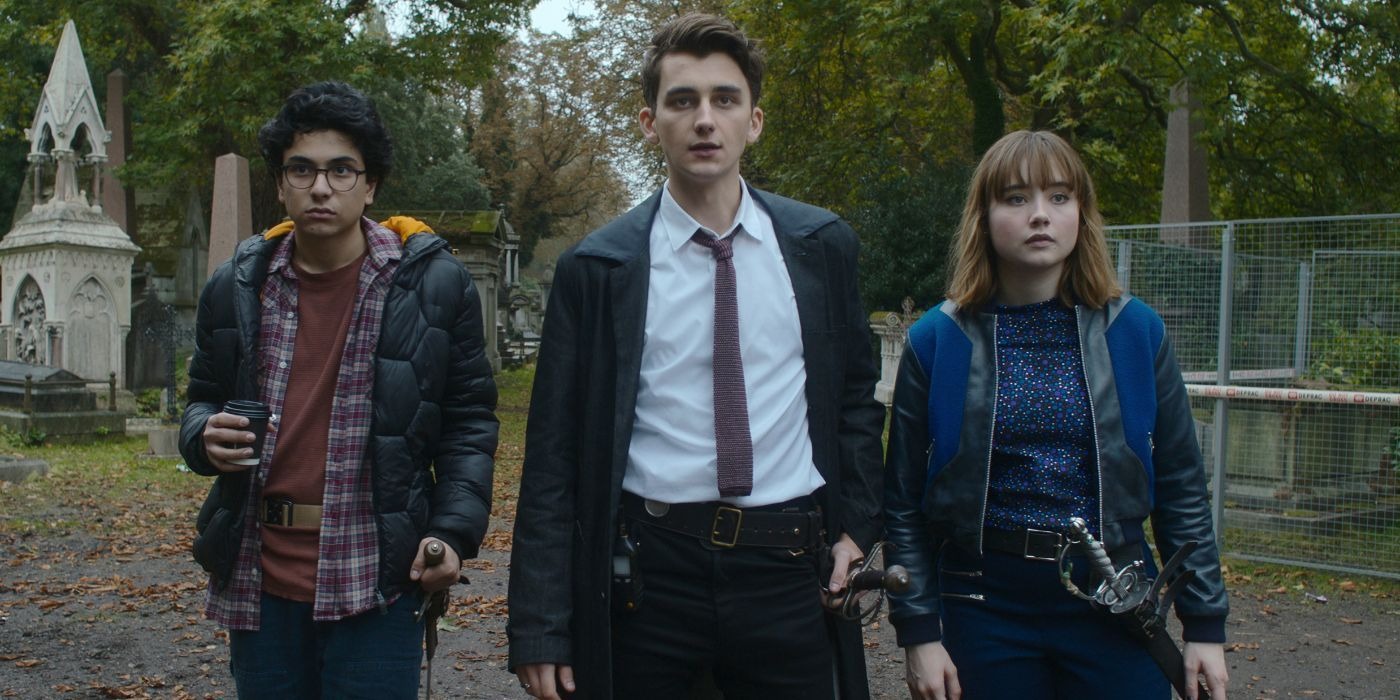The finale of Lockwood & Co. season 1 presents numerous unresolved mysteries that linger even after the credits roll. Drawing from the book series of the same name, Lockwood & Co. may hold clues within its original material.
Nevertheless, with the TV adaptation making various alterations from the source, predicting future developments in Netflix’s Lockwood & Co. remains challenging.

A New Chapter in Supernatural Storytelling
Netflix’s Lockwood & Co. stands out as a successful entry in the supernatural young adult genre, aligning itself with popular series such as Stranger Things and Wednesday.
Similar to these predecessors, season 1 delves into themes of murder, potent artifacts, and the supernatural. This analysis provides a comprehensive overview of the revelations and omissions in the closing moments of Lockwood & Co. season 1.
Introducing The Problem
Right from the beginning in episode 1, titled “This Will Be Us,” Lockwood & Co. immerses viewers in a ghostly adventure, opting for context clues and an engaging opening sequence over tedious exposition.
Known as “The Problem,” the emergence of ghosts began around 50 years ago. While a ghost’s touch can lead to death, it can also induce a comatose state or a phenomenon termed “ghost locking,” resembling a hypnotic trance.
Among the few who possess the ability to see and sense ghosts is Lucy Carlyle (Ruby Stokes, recognized for her role as Francesca in Bridgerton seasons 1 and 2). Identified as a “listener,” Lucy’s abilities to engage with the supernatural come in various forms.
Remarkably, she becomes only the second individual to converse with a Type Three ghost, the most cunning and dangerous of the three spirit categories. The origins of The Problem and the reason for the unique powers held by young people as opposed to adults remain unexplained. This supernatural narrative permits Lockwood & Co. to address themes of childhood trauma, particularly focusing on the experiences of child soldiers.
The Mystique of the Bone Mirror
The discovery of the bone glass mirror occurs when Lucy, Anthony Lockwood (Cameron Chapman), and George Karim (Ali Hadji-Heshmati) unearth it from the grave of Dr. Edmund Bickerstaff. Crafted from the remains of seven skeletons—his former patients—the mirror draws upon the agony of its victims, resulting in madness or death for those who gaze into it.
The mirror functions as a malevolent counterpart to Harry Potter’s Mirror of Erised, captivating viewers without clarifying what they perceive. Mary Dulac, who murdered Bickerstaff to escape the mirror’s curse, refers to it as a “window,” and the skull that Lucy interacts wit

h suggests it provides a view of “the eternal.” This likely hints at a form of afterlife, whose revelation proves too overwhelming for many.
Upon first gazing into the mirror, the skull expresses confusion, saying, “This isn’t right! Something’s changed! They’re trapped!” Lucy interprets this as evidence that it isn’t “the eternal,” while George questions whether the spirits of Bickerstaff’s victims remain “trapped.” Neither interpretation, however, is confirmed.
Given the clues regarding the nature of the mirror, it suggests that something is amiss with “the eternal,” potentially foreshadowing a larger danger for the future of Lockwood & Co.
Joplin’s Obsession with the Bone Mirror
Intrigued by the mirror, George becomes increasingly fixated on it, as does Pamela Joplin, portrayed by Sherlock actress Louise Brealey. Joplin’s fascination appears more intense than George’s, likely due to her adult status. She postulates that a young person holds the key to unveiling the mirror’s secrets, implying that youth may offer some immunity against its effects.
Joplin never explicitly states her reasons for desiring the bone mirror or her expectations of what lies within it, which in itself adds to the enigma surrounding her character.
George suspects that it could provide insights into The Problem’s origins, and Joplin seems to concur, yet her motivations stem more from an intoxicating allure than rational thought. Her obsession with the mirror leads her to disregard all sense when it is within reach.
The Intrigue of the Golden Blade
One of the most enigmatic figures in Lockwood & Co. is the character known as the “Golden Blade” (Luke Treadaway). Throughout season 1, despite multiple attempts to harm Lucy and Lockwood, he remains reticent about his identity and objectives. Although the Golden Blade does not operate under the Fittes organization, he appears to have ties directly to Penelope Fittes (Morven Christie).
His discussions with Penelope involve “members,” and she hands him a box marked with a harp symbol to “quell their complaining.” This interaction implies that he may belong to a distinct organization linked to Penelope or serves as an intermediary for them.
The harp symbol also appears on ghost-seeing goggles worn by an adult, suggesting the box provides abilities typically reserved for children. It stands to reason that this symbol connects to a more remarkable and hidden antagonist beyond the Fittes organization, with the Golden Blade serving as a prominent figure in Lockwood & Co. season 1.
The Mystery of Lockwood’s Door
Among the central questions anticipated in Lockwood & Co. season 2 is the mystery behind Lockwood’s door. Just as the finale concludes, the team leader is on the verge of revealing the secrets hidden within this room to Lucy and George.
Given Lockwood’s cryptic references to his deceased family, the room’s contents likely pertain to them, and if the adaptation remains faithful to the books, it originally belonged to his sister.
In the Lockwood & Co. books, Jessica, Lockwood’s sister, meets her demise after accidentally releasing a ghost while sifting through their late parents’ possessions, a task Lockwood refused to assist.
The room could serve as a memorial to her and/or Lockwood’s parents, with its importance heightened if he can perceive their death glows within. A more dramatic twist could involve their ghosts lingering in the room, but this seems unlikely, given Lockwood’s general dismissal of ghostly emotions.
Setting the Stage for Season 2
While Netflix has a history of abrupt cancellations, there remains hope for a Lockwood & Co. season 2. Should the series return, the groundwork laid in season 1 establishes the Golden Blade and Penelope Fittes as persistent antagonists.
Although the bone glass mirror sustained damage and was set for the DEPRAC furnaces at the end of season 1, it may receive a reprieve to explore answers regarding The Problem.
Additionally, Lucy’s unfriendly Type Three skull must account for its observations in the mirror before being rendered silent. Season 2 is poised to delve deeper into the traumas experienced by Lockwood, Lucy, and George, highlighted by Lockwood’s emotional journey of confronting his past.



